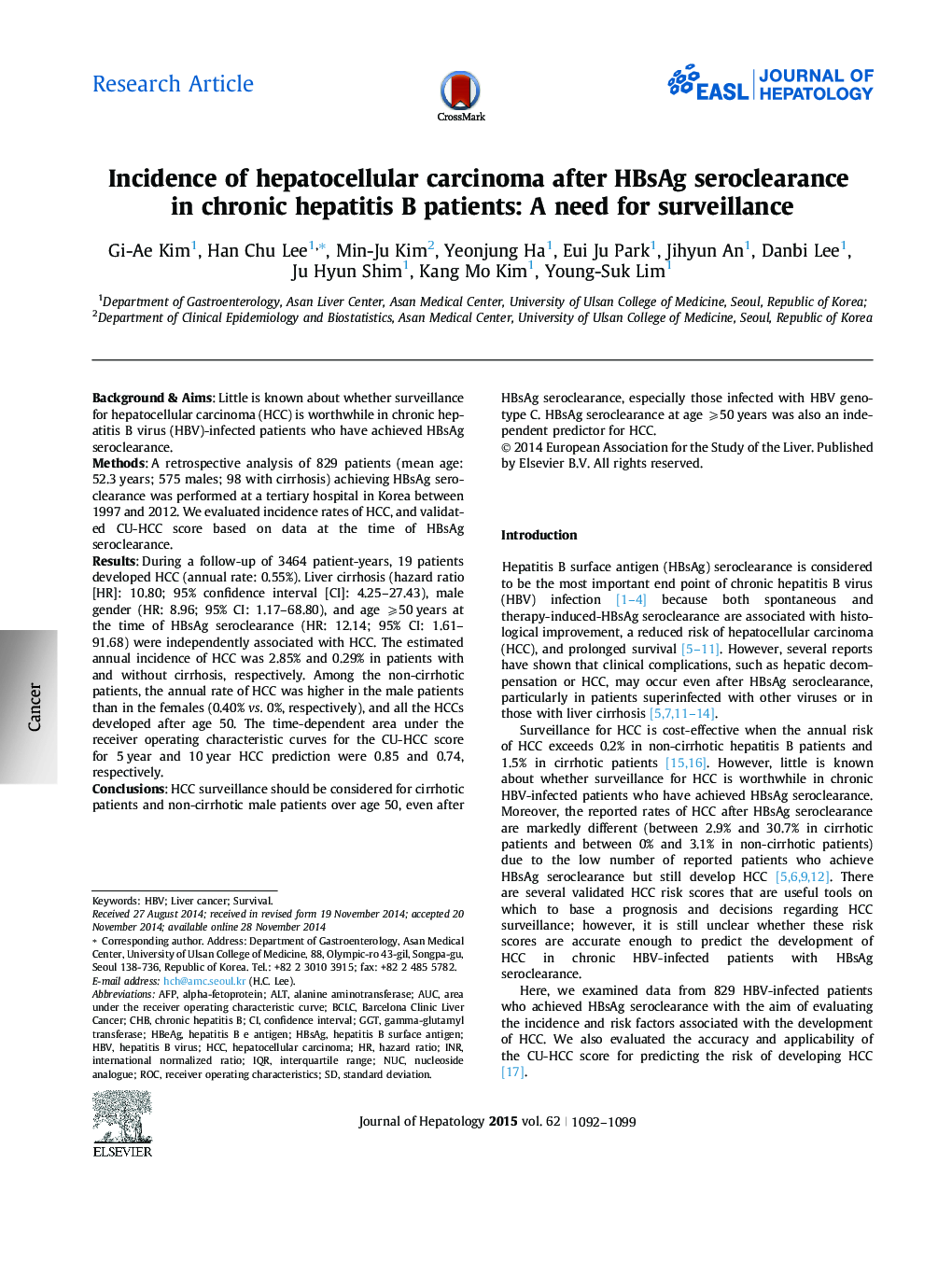| Article ID | Journal | Published Year | Pages | File Type |
|---|---|---|---|---|
| 6103033 | Journal of Hepatology | 2015 | 8 Pages |
Background & AimsLittle is known about whether surveillance for hepatocellular carcinoma (HCC) is worthwhile in chronic hepatitis B virus (HBV)-infected patients who have achieved HBsAg seroclearance.MethodsA retrospective analysis of 829 patients (mean age: 52.3 years; 575 males; 98 with cirrhosis) achieving HBsAg seroclearance was performed at a tertiary hospital in Korea between 1997 and 2012. We evaluated incidence rates of HCC, and validated CU-HCC score based on data at the time of HBsAg seroclearance.ResultsDuring a follow-up of 3464 patient-years, 19 patients developed HCC (annual rate: 0.55%). Liver cirrhosis (hazard ratio [HR]: 10.80; 95% confidence interval [CI]: 4.25-27.43), male gender (HR: 8.96; 95% CI: 1.17-68.80), and age ⩾50 years at the time of HBsAg seroclearance (HR: 12.14; 95% CI: 1.61-91.68) were independently associated with HCC. The estimated annual incidence of HCC was 2.85% and 0.29% in patients with and without cirrhosis, respectively. Among the non-cirrhotic patients, the annual rate of HCC was higher in the male patients than in the females (0.40% vs. 0%, respectively), and all the HCCs developed after age 50. The time-dependent area under the receiver operating characteristic curves for the CU-HCC score for 5 year and 10 year HCC prediction were 0.85 and 0.74, respectively.ConclusionsHCC surveillance should be considered for cirrhotic patients and non-cirrhotic male patients over age 50, even after HBsAg seroclearance, especially those infected with HBV genotype C. HBsAg seroclearance at age ⩾50 years was also an independent predictor for HCC.
